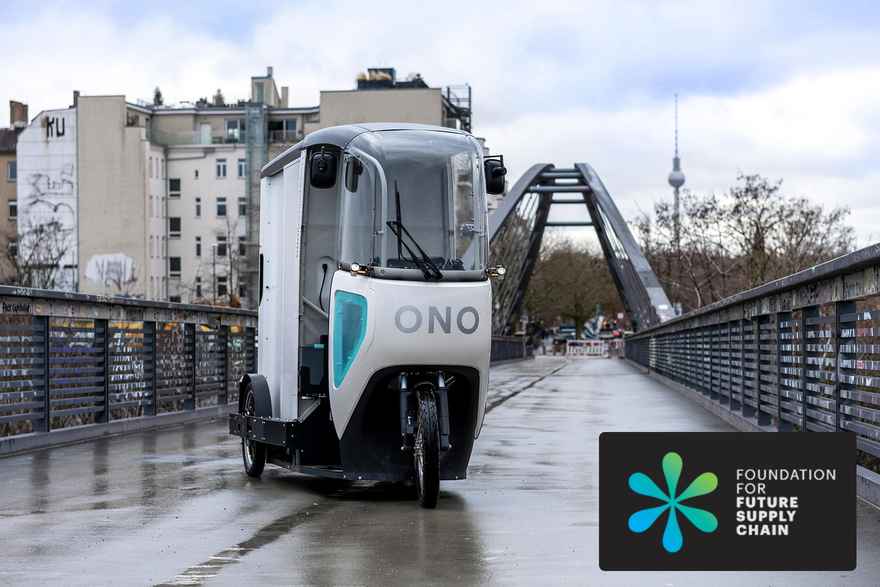e-cargobikes.com: Second-generation cargobikes arrive in the UK

Julia Swales talked to Alan Braithwaite, a Director of e-cargobikes.com, and an advisory board member of The Foundation for Future Supply Chain, to find out what’s happening now, a year on from her last interview with CEO James FitzGerald.
The first major change on this ‘journey’ is the transition to a second generation of e-cargobike. Traditional e-cargobike design is pretty much the same vehicle that Dutch and Danish families use to transport their children. E-cargobikes.com has used these vehicles over 100’s of thousands of hours around London and that practical operating experience has shown that:
- Loading and unloading is time consuming, frequently involving costly double handling.
- The limited payload is a constraint on productivity potential.
- Road and cycle infrastructure in the UK challenge the ‘domestic’ build standard in areas such as vehicle frame durability due to potholes and level crossings.
- Motor and battery technologies designed for domestic use are also inadequate for high duty-cycle use experienced in commercial applications.
- Notwithstanding those limitations, e-cargobikes.com have proven that these bikes can do more work than a 3.5 tonne van delivering groceries within a 5-mile radius.
e-cargobikes.com are now introducing the Berlin built ONO-Motion to the UK. It carries 190Kgs in a 2 cubic metre modular load container that can be rolled on and off its tractor unit in under 60 seconds. This second-generation class of e-cargobikes resolve the shortcomings of the earlier vehicles. They feature modular loading to avoid double handling and increased payload and are built to industrial standards. Initial studies show that rider ‘up-time’ (time between arrival at 1st delivery and completing last delivery) for the ONO is 74% compared to 38% for a traditional fixed-body cargobike, promising dramatic cost reduction for operators and ultimately consumers.
The ONO e-cargobike will support longer delivery journeys and the greater capacity enables the service to combine the full consumer demand range of next-day, same-day, same-hour with big-shop, small convenience-shop. This can dramatically increase drop density which is the key to increased productivity and cost reduction for operators and consumers. The ONO e-cargobike can also support a whole range of service and support activities beyond just e-commerce: from plumbers and office equipment to catering, food service and retail delivery.
Securing the potential cost reduction from this new generation of e-cargobikes requires that operators change their logistics. In some cases, like the plumber, service agent, local merchant, it will be a simple plug and play. But for others, they will need to implement software changes. Planning order capture and delivery commitment for a bike is quite different than for a van and the experience is that the algorithms don’t transfer, let alone the geospatial mapping. They may also need to implement micro-hubs to allow bulk movement into the general delivery zone for onward movement by e-cargobikes. ONO’s modular loading enables this with minimal double handling, and micro-hubs will be able to accommodate a range of traffics. This is exactly what amazon.com is doing in Bishopsgate in the city of London, albeit without the increased efficiency of swap-body containerisation.
The potential for these high-capacity, zero-emission vehicles is clear – saving operators money, helping address the climate crisis, reducing congestion, and improving air quality, while also overcoming many of the challenges facing van based last mile delivery, such as availability, cost and charging capacity.
Author: Julia Swales
Source: Ti Insight